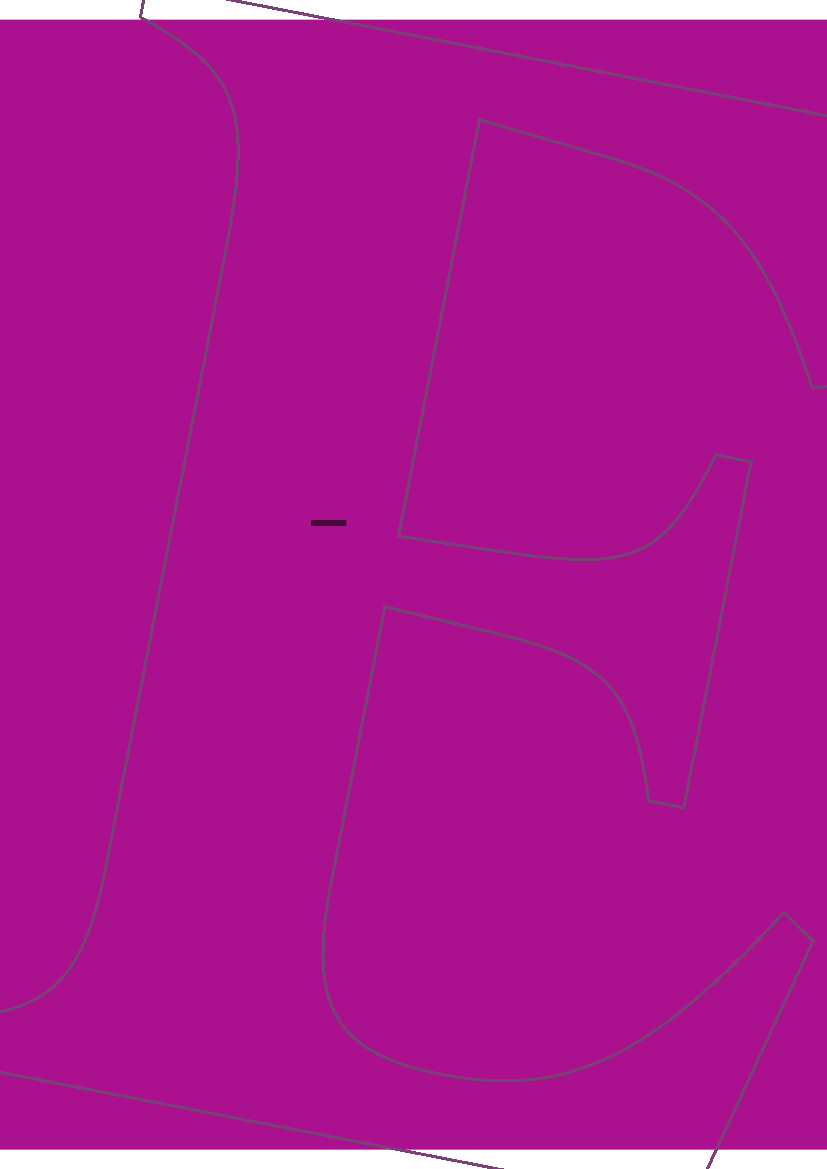Udvalget vedrørende Det Etiske Råd 2011-12
UER Alm.del Bilag 15
Offentligt
1
Regionaleuthanasiareview committees
annual report2010
2
ContentsForeword 3
Chapter IDevelopments in 2010Notifications Website Due medical care ‘Finished with life’
5566
a b c d e f
Chapter IIDue care criteria
Due care criteria: general Due care criteria: specific Voluntary and well-considered request Mental illness or disorder Depression Dementia Advance directive Unbearable suffering with no prospect of improvement Unbearable suffering with no prospect of improvement in special cases Dementia Mental illness or disorder Coma Palliative sedation Informing the patient No reasonable alternative Independent assessment Due medical care
81010101010 1117222222232323232427
Chapter IIICommittee activitiesStatutory framework Role of the committees
323234
Overview of notifications
3
ForewordThis is the 2010 annual report of the five regional euthanasia review committees. In ourannual reports we account for the way in which we review cases on the basis of theTermination of Life on Request and Assisted Suicide (Review Procedures) Act. The reportprovides details of the number of notifications received, the nature of the cases reported, thecommittees’ findings and the considerations on which these were based.As in the previous six years, the number of notifications under the Act rose in 2010, from2,636 in 2009 to 3,136 in 2010 – a sharp increase (19%). The cause of this continuing increase inthe number of notifications from year to year is not known. The year under review saw thestart of a second evaluation (mentioned in earlier annual reports) of how the Act operates.The results are due in late 2012.In 2010 the committees were able to reach conclusions on 2,667 of the 3,136 notifications.In 2010 the Ministry of Health, Welfare and Sport gave the committees the go-ahead to takeon more staff. Despite this, their work fell even further behind schedule. As a result, thestatutory deadline for issuing their findings on notifications was seriously exceeded in anumber of cases. This is not only undesirable, but unlawful.The committees greatly regret this state of affairs, which they also made known to theattending physicians. Both the members and the secretariats of the committees have madeevery effort to tackle these problems. An internal working group on working procedures hasmade a number of proposals designed to make the review of notifications by the committeesmore efficient, without of course impairing its quality. The proposals will be assessed byconducting pilot projects in two regions. These will start in mid-2011.The considerable public focus on voluntary euthanasia is reflected in a number of initiativesthat were launched in 2010. The initiative group Uit Vrije Wil (‘Of one’s own free will’)presented a proposal for legislation, the Dutch Voluntary Euthanasia Society (now Right toDie-NL) conducted a study on the feasibility of an ‘end-of-life clinic’ and the Royal DutchMedical Association initiated a debate, based on a published draft position paper, on the roleof physicians in termination of life at the patient’s request. The members of the committeeshave, of course, noted these initiatives with interest. However, given their ownresponsibilities, their independent status and their role in reviewing cases, the committeesdo not feel it is appropriate for them to express an opinion on the initiatives. Their task is toreview the actions of attending physicians, in the light of the due care criteria laid down insection 2 of the Act, and to consider whether, in accordance with prevailing medical opinionand standards of medical ethics, the criteria have been complied with.One matter of continuing concern to the committees is that their reviews of notificationsshould be unequivocal. While taking account of the principle that every notification shouldbe reviewed according to the specific circumstances of the case, the committees are always atpains to harmonise their findings. In 2010 they again held meetings on this particularsubject, which were attended by the lawyers (including the secretaries), physicians andethicists on the committees. For more on this, readers are referred to Chapter I.Of the 2,667 notifications on which the committees were able to reach conclusions in the yearunder review, they found in nine cases that the physician had not acted in accordance with
4the due care criteria. In five of these cases, it was the way in which the euthanasia or assistedsuicide procedure was performed that was deemed not to comply with the criteria – sufficientreason to devote a symposium marking the departure of coordinating chair J.J.H. Suyver inDecember 2010 to the topic ‘Performance of euthanasia and assisted suicide with due medicalcare’.The committees are always pleased to receive feedback.W.J.C. Swildens-RozendaalCoordinating chair of the regional euthanasia review committeesThe Hague, August 2011
5
ChapterINotifications
Developments in 2010
The following developments took place in 2010.
In 2010, the regional euthanasia review committees (‘thecommittees’) received 3,136 notifications of termination oflife on request (often referred to as ‘euthanasia’) or assistedsuicide.1This constitutes an increase of 19% over the 2009figure (2,636). The Termination of Life on Request andAssisted Suicide (Review Procedures) Act (‘the Act’) will beevaluated again; the evaluation, which has already started,will also investigate the sharp rise in notifications.In 2010, the committees reviewed 2,667 of the 3,136notifications. The proportion of notifications actuallyreviewed has been a matter of great concern to thecommittees for some time. The substantial increase in thenumber of notifications (which has been going on for someyears now) and the resulting capacity problems, especiallyin the secretariats, have caused the committees to fallbehind schedule. In spring 2010 the Ministry of Health,Welfare and Sport allowed some more staff to be taken on,but still not enough. At the same time, unfortunately, somesecretariat staff were on extended sick leave, with the resultthat the existing backlog of work, far from being reduced,continued to increase. The period within whichnotifications are dealt with has therefore becomeunacceptably long. The committees consider this a highlyregrettable situation; dealing with notifications in goodtime and complying with the law is essential if they are toenjoy continuing confidence.Together with the secretariats, the committee members aretherefore doing all they can to tackle these problems.Among other things, a working group on workingprocedures has been set up, and in early 2011 it madeproposals designed to make the committee’s workingprocedures even more efficient, although obviously subjectto the constraints imposed by the Act.
In each case the committees examined whether thephysician who had performed the procedure had acted inaccordance with the due care criteria set out in the Act. Innine cases the committees found that the physician had notacted in accordance with the Act. The most relevantelements of these cases – as well as a number of cases inwhich the committees found that the physician had actedin accordance with the due care criteria – are described inChapter II (Due care criteria: specific) under the criterionconcerned.2
WebsiteThe committees aim to publish in full all the findings inwhich they conclude that the physician had not acted inaccordance with the Act on the website www.euthanasiecommissie.nl. Findings in which the committeesconclude that the physician had acted in accordance withthe due care criteria are also published on the website. Onlyfindings whose publication might jeopardise the patient’sanonymity are withheld.Unfortunately, since the increase in the number ofnotifications over the past few years has not been matchedby a similar increase in the number of staff working for thecommittees, they were again unable to process any findingsfor publication in 2010. Consequently, none were published.The committees hope to resume publishing findings on thewebsite (which has been completely redesigned) in thecourse of 2011.
1 See ‘Overview of notifications’ for the national figures.2 The passages included here as cases mainly concern the due care criterion that is being discussed at that point. A few cases in which the committees found that the procedure had not been performed in accordance with the due care criteria – owing to almost identical failings – are also given as examples.
6Due medical careIn assessing compliance with the due medical care criterion,the committees carefully consider the current standard inmedical and pharmaceutical research and practice, normallytaking the method, substances and dosage recommended bythe Pharmacy Research Institute (WINAP) of the RoyalDutch Association for the Advancement of Pharmacy(KNMP) as their guide. The Institute’sStandaard Euthanatica,toepassing en bereiding 2007 (‘Standaard Euthanatica’)alsostates which substances – and dosages – the KNMP does ordoes not recommend for use in cases of termination of lifeon request or assisted suicide.In 2008, in the journalMedisch Contact,the committeesreferred toStandaard Euthanaticaand announced that theywould continue to take it as their guide.3The committees note that more attending physiciansfollowedStandaard Euthanaticain 2010. However, thecommittees again came across the use of substances that arenot recommended inStandaard Euthanatica,andnotifications in which the dosage was not specified or wasnot in accordance with the recommendations inStandaardEuthanatica.In such cases the committees always asked the physician toexplain whyStandaard Euthanaticawas not followed.Unfortunately, they note that not all the physicians wereable to give adequate reasons. In the year under review therewere five cases in which the committees found that thephysician had not acted in accordance with the due carecriteria regarding the choice or dosage of substances. Anumber of these almost identical cases are described below.In 2010, a joint KNMP/WINAP and Royal Dutch MedicalAssociation (KNMG) working group began drawing up anew version ofStandaard Euthanatica.On request, thecommittees provided the working group with informationon their experience in assessing how the euthanasiaprocedure was performed (of course, always in generalterms, and hence anonymously).In December 2010 the committees held a symposium on thesubject, which was also attended by representatives ofKNMP/WINAP and the KNMG. The symposiumreconfirmed that the committees will take the 2007 versionofStandaard Euthanaticaas their guide until a new version ispublished, and that physicians who do not followStandaardEuthanaticamust give adequate reasons for doing so.3 Medisch Contact, no. 4, November 2008.
‘Finished with life’In the year under review the committees also receivednotifications in which physicians described the unbearablenature of the patient’s suffering in terms of being ‘finishedwith life’. However, the physicians do not appear to beusing the term in quite the same way as it is used in thepublic debate on the subject. What they want to express isthat the patient perceived his suffering – and hence his life –as unbearable, and therefore wished to end it.As discussed in more detail in Chapter II (Due care criteria:specific, under (b)), the unbearable nature of the patient’ssuffering is determined not only by his present situationbut also by his perception of the future, his physical andmental stamina and his own personality. What is stillbearable to one patient may be unbearable to another.In the light of the public debate on being what is commonlytermed ‘finished with life’,4plus the fact that physiciansalso use this or similar terms fairly regularly to express theunbearable nature of suffering when reporting cases ofeuthanasia or assisted suicide, the committees felt a need todiscuss the matter jointly. In autumn 2010 a meetingattended by physicians, ethicists and lawyers from all thecommittees was held on the subject. One main reason tohold such meetings regularly is to harmonise thecommittees’ findings.The committees review the physician’s actions in the lightof the due care criteria laid down in the Act. The intendedpurpose of this legislation was to codify the SupremeCourt’s case law and the due care criteria that had evolvedfrom it. The committees take account of this case law wheninterpreting the criteria.The Supreme Court’s Brongersma ruling is of particularrelevance to the ‘finished with life’ debate.5The actual caseoccurred before the Act came into force, but the ruling washanded down afterwards. The ruling stated that sufferingmust chiefly be caused by a medically recognised disease ordisorder. According to the Court, which referred to thepreparatory work on the Act, a physician does not have theexpertise to assess suffering caused by being ‘tired of living’,for this does not fall within the field of medicine (‘Since thephysician is then entering a field that lies beyond hisprofessional competence, he may not, as a medical expert,assess the unbearable nature, hopelessness or untreatabilityof that suffering’).
4 The committees themselves do not use this term.5 Supreme Court, 24 December 2002, Nederlandse Jurisprudentie (NJ) 2003, 167.
7It is clear that the legislator did not intend the Act to beapplicable to euthanasia on grounds of being ‘finished withlife’, particularly since the public debate on the subject hadnot yet taken place.6The government referred in a variety of terms to the lack ofan unequivocal view within the medical profession on theconcept of being ‘finished with life’, and indicated thatthere had not yet been a public debate on the subject(‘however, this is not yet an issue that has been fullydiscussed in Dutch society’).7The committees consider theparliamentary history of the Act an important factor.Since euthanasia and assisted suicide were in all casescriminal offences at the time when Mr Brongersma died, theSupreme Court had to decide whether the physician couldsuccessfully invokeforce majeurein the sense of necessity,arising from a conflict of duty. When the Act came intoforce, euthanasia and assisted suicide ceased to be an offenceif performed by a physician who reported the procedure andcomplied with the statutory due care criteria. Unlike acourt’s evaluation of the defence of necessity, review by thecommittees under the Act is a test of reasonableness: couldthe attending physician reasonably be satisfied that thepatient’s suffering was unbearable with no prospect ofimprovement? The physician must make clear to thecommittees that this was the case. The committees thendecide whether, in the light of prevailing medical opinionand the standards of medical ethics, the due care criteriawere complied with.In all the notifications that were reviewed by thecommittees, the patient’s unbearable suffering with noprospect of improvement was chiefly due to a recogniseddisease or disorder (see, for example, case 11).
6 See Proceedings of the House of Representatives, 23 November 2000, Memorandum of Reply 27-2254; Parliamentary Papers, Senate 2000-2001, 26691, no. 137b, p. 32; Response, Parliamentary Papers, Senate 2000-2001, 26691, no. 137b, p. 34 ff.7 See, inter alia, Parliamentary Papers, House of Representatives 2000-2001, 26691, no. 22, p. 76.
8
ChapterII
Due care criteria
Due care criteria: generalThe committees assess whether the attending physician hasacted in accordance with all the statutory due care criteria.These criteria, as laid down in section 2 of the Act, are asfollows.Physicians must:a be satisfied that the patient’s request is voluntary and well-considered;b be satisfied that the patient’s suffering is unbearable, withno prospect of improvement;c inform the patient about his situation and prognosis;d have come to the conclusion together with the patient thatthere is no reasonable alternative in the patient’s situation;e consult at least one other, independent physician, who mustsee the patient and give a written opinion on whether thedue care criteria set out in (a) to (d) have been fulfilled;fexercise due medical care and attention in terminating thepatient’s life or assisting in his suicide.Procedures for termination of life on request and assistedsuicide are almost always carried out by the attendingphysician; in practice, this is often the patient’s generalpractitioner. In some cases the procedures are performed bya physician other than the regular attending physician, as alocum in the latter’s absence, because the patient’s situationrapidly deteriorates or because the attending physician doesnot wish to carry out the procedure himself, for instancebecause of his religious or ethical views.In such situations it is important that the physician whocarries out the procedure, and hence submits thenotification, should obtain sound information in advanceabout the patient’s situation and be personally satisfied thatthe due care criteria have been complied with.Occasionally, physicians are unclear as to their (respective)roles in the termination of life. If, for example, a case ofeuthanasia is reported by a physician who did not performthe procedure himself, the physician who actuallyperformed the procedure will still have to sign thenotification, and will be regarded by the committee as theattending physician.8The information provided by attending physicians is ofcrucial importance to the committees’ reviews. If thephysician gives an account of the entire decision-makingprocess in his notification, he may not be required to answerfurther questions at a later stage.The committees note that an increasing number ofphysicians are using the new report form. The questions init provide attending physicians with a better guide as tohow to make it clear to the committee that they havecomplied with the due care criteria.The committees sometimes require further information,which can often be provided by telephone or in writing. Insome situations, however, the committees prefer tointerview the physician in person in order to obtain aclearer picture of the decision-making process at the end ofthe patient’s life or what happened when the procedure wasperformed.The committees are aware that such an interview, besidestaking up the physician’s time, may be distressing to him.They wish to emphasise that the purpose of the interview isto give the physician an opportunity to provide furtherdetails regarding a notification which the committee stillhas its doubts about even after the physician has providedfurther information by telephone or in writing. In theabsence of such details, the committee would be unable tofind that the physician acted in accordance with thestatutory due care criteria. The interview also gives thephysician an opportunity to answer questions about hisactions (which can, of course, be expected of him).In 2010, the great majority of notifications again gave nogrounds for further discussion or questions when they camebefore the committees. In those cases the committees couldswiftly conclude that the physician had acted in accordancewith the due care criteria (case 1 is included as an exampleof such a notification).
8 See article 3 (1) of the guidelines on the committees’ working procedures, which were adopted on 21 September 2006.
9Case 1The due care criteria were complied with; no special particularsFinding: criteria complied with
In early 2009 the patient, a man in his twenties, developed symptoms that were caused by a form of juvenile cancer. The tumour was located in the thoracic wall, and there was metastasis in the bone marrow.The patient was given high doses of chemotherapy, and in autumn 2009 the tumour was surgically removed. The patient was then given more chemotherapy, followed by stem cell transplantation in late 2009 and radiotherapy in early 2010.Despite this, he again suffered severe pain due to metastasis throughout the body. These were treated with palliative chemotherapy and radiotherapy. The pain control treatment had unpleasant side effects.The patient was given fentanyl patches, methadone and Oramorph, but was still suffering unbearable pain. His condition deteriorated rapidly, and by the final week he was completely bedridden. Owing to urine retention he was fitted with a permanent catheter during the last few days.His suffering was caused by severe pain throughout his body, general debilitation and total dependence on care by others. The patient found this suffering unbearable, andthe physician was satisfied that this suffering was unbearable to the patient.Apart from the palliative measures that had already been taken, there were no other ways to relieve the suffering. The patient refused palliative sedation. He did not want to be given higher doses of painkillers and sedatives and then lie in bed waiting to die.Two days before he died, he had made his first specific request for euthanasia to the physician. He had subsequently repeated the request. There was an advance directive.An independent specialist who was also a SCEN physician was consulted as an independent physician. He saw the patient a day before he died. The patient had not yet taken any methadone, since he wanted to be as lucid as possible. He was lucid while explaining the reasons for his request for euthanasia. He looked pallid. The independent physician saw the patient’s face contort with pain several times. According to the independent physician, the patient’s suffering mainly consisted of the increasingly severe pain and the fact that he could no longer get out of bed. Together with the prospect that things would only get worse, this made the patient’s suffering unbearable to him. There was no prospect of any improvement in his suffering, nor were there any alternative ways to relieve the suffering.According to the independent physician, the patient was decisionally competent. He was able to understand the implications of his wish for euthanasia and to express that wish in words. The request was voluntary and well-considered. The independent physician was satisfied that the due care criteria had been complied with.The attending physician performed euthanasia by administering 2000 mg of Pentothal and 20 mg of Pavulon intravenously.The committee assessed the physician’s actions for compliance with the due care criteria laid down in section 2 of the Act, and considered whether, in accordance with prevailing medical opinion and the standards of medical ethics, the criteria had been complied with.In view of the above facts and circumstances, the committee found that the attending physician could be satisfied that the patient’s request was voluntary and well-considered, and that his suffering was unbearable with no prospect of improvement. The physician gave the patient sufficient information about his situation and prognosis. Together, the physician and the patient could be satisfied that there was no reasonable alternative in the patient’s situation. The physician consulted at least one other independent physician, who saw the
10patient and gave a written opinion on whether the due care criteria had been complied with. The physician performed the euthanasia with due care. The committee found that the physician had acted in accordance with the statutory due care criteria laid down in section 2 (1) of the Act.
In a number of cases, however, the notification gave rise toin-depth, lengthy discussions within the committee. Theremaining cases included in this chapter are examples ofcases that gave rise to discussion and, usually, furtherquestions. Unlike case 1, in which the committee’s findingsregarding all the due care criteria are discussed, in the othercases the description usually focuses on the relevantsections that serve as examples for a review of compliancewith a specific criterion.
Due care criteria: specifica Voluntary and well-considered requestThe physician must be satisfied that the patient’s requestis voluntary and well-considered.
must be given to the question of whether the request isvoluntary and well-considered. A mental illness or disordermay make it impossible for the patient to determine hisown wishes freely. The physician must then ascertain, orobtain confirmation, that the patient is decisionallycompetent. Among other things, he must look at whetherthe patient appears capable of grasping relevantinformation, understanding his condition and advancingconsistent arguments. In such cases it is important toconsult not only the independent physician but also one ormore experts, including a psychiatrist.If other medical practitioners have been consulted, it isimportant to make their findings known to the committee.In 2010 there were two notifications of euthanasia orassisted suicide based on psychiatric problems, in both casesdepression (see, for example, case 5).
DepressionKey elements in the contact between the physician and thepatient include willingness to discuss the (possiblyimminent) end of the patient’s life, the patient’s wishes, andways in which they can or cannot be fulfilled. The patient’srequest must be specific and made to the physician.Three elements are crucial here:1 The request for termination of life or assisted suicide musthave been made by the patient himself.2 It must be voluntary.There are two aspects to this. The request must be internallyvoluntary, i.e. the patient must have the mental capacity todetermine his own wishes freely, and externally voluntary,i.e. he must not have made his request under pressure orunacceptable influence from those around him.3 In order to make a well-considered request, the patientmust be fully informed and have a clear understanding ofhis disease. The patient is considered decisionally competentif he is capable of making an internally voluntary, well-considered request.In the year under review, there were again notifications inwhich the patient was suffering from depression in additionto one or more somatic conditions. Depression often adds tothe patient’s suffering (see, for example, case 13). Thepossibility that it will also adversely affect his decisionalcompetence cannot be ruled out. If there is any doubt aboutwhether the patient is depressed, a psychiatrist will inpractice often be consulted in addition to the independentphysician. The attending physician must thereforeascertain, or obtain confirmation, that the patient isdecisionally competent. If other medical practitioners havebeen consulted, it is important to make this known to thecommittee.It should also be noted that it is normal for patients to be inlow spirits in the circumstances in which they make arequest for euthanasia, and that this is therefore notgenerally a sign of depression.
DementiaAll twenty-five notifications, dealt with in 2010, concerningtermination of life on request or assisted suicide involvingpatients suffering from dementia were found by thecommittees to have been handled with due care. Thepatients were in the initial stages of the disorder and stillhad insight into the condition and its symptoms (loss ofbearings and personality changes). They were deemeddecisionally competent because they could fully grasp the
Mental illness or disorderIn general, requests for termination of life or assistedsuicide because of unbearable suffering with no prospect ofimprovement that arises from a mental illness or disordershould be treated with great caution. If such a request ismade by a psychiatric patient, even greater consideration
11implications of their request. Cases 6, 7 and 8 serve asillustrations.The committees adhere to the principle that physiciansshould normally treat requests for termination of life frompatients suffering from dementia with additional caution.They must take the stage of the disorder and the otherspecific circumstances of the case into account whenreaching a decision. Patients at a more advanced stage of thedisorder are less likely to be decisionally competent.If a patient is in the initial stages of dementia, it is advisableto consult one or more experts, preferably including ageriatrician or a psychiatrist, in addition to the independentphysician. Apart from whether or not the request isvoluntary and well-considered, the question of whetherthere is no prospect of improvement in the patient’ssuffering, and above all whether his suffering is unbearable,should be key elements in the physician’s decision in allsuch cases.The physician must take additional care in reaching hisdecision and must make clear to the committee how it wasreached.directive in good time and update it at regular intervals. Itshould describe as specifically as possible the circumstancesin which the patient would wish his life to be terminated.The clearer and more specific the directive is, the firmer thebasis it provides for the physician’s decision. The latter, aswell as the independent physician, will have to decide in thelight of both the described and the current situation – andhaving regard to the process that the physician has gonethrough with the patient – whether the patient has made avoluntary and well-considered request, whether he issuffering unbearably with no prospect of improvement andwhether he has no reasonable alternative.If, on the other hand, the patient is capable of expressing hiswishes and can request that his life be terminated, a writtendirective can help eliminate any uncertainty and confirmthe oral request. A handwritten directive drawn up by thepatient in which he describes the circumstances in his ownwords often provides additional personal confirmation, andis therefore more significant than a standard form,particularly one that is conditionally worded.Contrary to popular belief, the Act does not require anadvance directive to be drawn up. In practice, the existenceof such a directive does make it easier to subsequently assessthe case, but the committees wish to emphasise that it isnot the intention that people be put under unnecessarypressure to draw up such a directive in difficultcircumstances, in some cases only shortly before they die.By recording details of a patient’s wish for euthanasia andthe physician’s and patient’s decision-making processconcerning the end of his life in the patient’s records, thephysician can also help eliminate any uncertainty. Thismay, for example, be of help to locums and others involvedin reaching a decision.Case 2 (not included here)
advance directiveThe Act requires the physician to be satisfied that thepatient has made a voluntary and well-considered request.The request is almost always made during a conversationbetween the physician and the patient, and hence is madeorally. What matters most is that the physician and thepatient should be in no doubt about the patient’s request.The Act makes specific provision for a written directive. Thisreplaces an oral request in cases where a patient who used tobe decisionally competent is no longer capable of expressinghis wishes when the time comes to consider ending his life.The due care criteria likewise apply here, which is why it isso important that the physician to whom the request ismade in a specific situation should be in no doubt regardingthe directive. It is therefore advisable to draw up the
Case 3The patient’s request was voluntary and well-considered; despite limited capacity forcommunication during the visit by the independent physician, this could still bedetermined with sufficient certaintyFinding: criteria complied with
In 2008 the patient, a man in his sixties, was diagnosed with a melanoma which had metastasised into the lymph glands. There was no prospect of recovery. Surgery was performed. By early 2010 there was diffuse metastasis in the upper and lower back. Despite various therapies, the patient was in great pain.In mid-2010 the patient began to have difficulty in finding words. This proved to be caused by
12metastases in the brain. He then began to have epileptic seizures, for which he was treated with dexamethasone and Depakine.Towards the end the patient deteriorated very rapidly. He had headaches, and became bedridden, incontinent and dependent as a result of repeated seizures. One day before he died he was given Dormicum to make him less restless, but even in his sleep he had epileptic attacks.The patient’s unbearable suffering was caused by pain and seizures, plus the fact that he was now barely able to communicate. Confinement to bed, dependency and loss of dignity contributed to a state of suffering with no prospect of improvement.Apart from the measures already taken, there were no other ways to alleviate the suffering. The documents make clear that the physician gave the patient sufficient information about his situation and prognosis.After being diagnosed with diffuse metastasis, the patient had discussed euthanasia with the physician in general terms. Three days before he died he specifically requested euthanasia, and he repeated the request several times. Towards the end he could still indicate that he wanted euthanasia, but he was no longer able to substantiate his request.There was a recent advance directive in which the patient had indicated which situation would mean unbearable suffering to him. According to the attending physician there was no pressure on the patient from those around him, and he was aware of the implications of his request and his physical situation.An independent specialist, who was also a SCEN physician, was consulted as an independent physician. He saw the patient on the day of the euthanasia procedure, after being informed about him by the attending physician and examining the medical records. According to his report, the patient was in bed and was sleeping.The independent physician was able to shake the patient awake, but the only thing he could make out was that the patient wanted to die. The patient was no longer able to make anything else clear.The patient was restless, and because he was rubbing his abdomen with his hand he seemed to be in pain. His wife and children said that he was now in a situation he had wanted to avoid: he was in great pain, with loss of dignity. His family said he was a very independent, strong man who, when his disease proved to have metastasised, had made quite clear that he wanted euthanasia in such circumstances.The independent physician’s summary was that the patient, in the terminal stage of a now untreatable melanoma, was in great pain and having numerous seizures. He had been treated with high doses of painkillers, antiepileptics and Dormicum. The independent physician was satisfied that, despite the patient’s drowsiness, he was still suffering unbearably with no prospect of improvement. The patient could still indicate his wish for euthanasia, but could no longer substantiate it. The statements by the patient’s wife and children, the physician’s notes and the patient’s advance directive made clear that the request was well-considered and voluntary. There were no realistic alternative ways to alleviate the suffering. The independent physician was satisfied that the due care criteria had been complied with.The committee found that the physician had acted in accordance with the statutory due care criteria.
Case 4 (not included here)
13Mental illness or disorderIn 2010 the committees received two notificationsconcerning patients whose unbearable suffering was due toa mental illness or disorder.In these cases the physicians proved to have paid specialattention to the question of whether the request wasvoluntary and well-considered and whether the patient’ssuffering was unbearable with no prospect of improvement(case 5 is included below as an example).
Case 5A voluntary, well-considered request by a patient who was suffering unbearably with noprospect of improvement owing to a psychiatric condition (depression)Finding: criteria complied with
More than four years before the patient died,9 she was diagnosed with vital depression. Her medical history reveals recurring episodes of depression, which were difficult to treat, from 1980 onwards. Apart from a period of several months, she was in hospital from 2005 until she died. Since her depression failed to respond to the various treatments, a psychiatrist working at a teaching hospital was asked for a second opinion. He examined the patient himself, and on his advice she was given treatment based on anti-depressant medication, assistance in finding ways to keep her mind occupied during the day, assistance in keeping her as independent as possible and use of physiotherapy to improve her mobility. Lack of energy and initiative, and despondency made it very difficult for her to cooperate with the treatment. She found it distressing, and seemed constantly unable to cope. When it became clear that this treatment was as unsuccessful as the rest, the medication was phased out and all further treatment terminated (in consultation with the psychiatrist). It was decided to prevent or treat the patient’s physical symptoms as far as possible.Her suffering was due to the fact that she perceived her inability to feel anything as distressing; she had lost touch with, and all sense of, her surroundings and life in general. The various treatments over the previous years had not helped. She had been suffering from therapy-resistant depression for years, and did not wish to continue living in what she perceived as a highly distressing way. The fact that there was no prospect of improvement in her situation, and her increasing physical deterioration, made her suffering unbearable to her. The physician found this palpable.He had seen her cooperating as best she could with the treatment and continuing to hope that she would get better. He now could understand that after four years of treatment in which her condition, far from improving, had merely deteriorated, and with no way to alleviate her suffering, she did not want to continue living. Apart from the measures already taken there were no ways left to alleviate her suffering. The documents show that the physician and the attending specialists, the general practitioner and the registrars gave the patient sufficient information about her situation and prognosis. Some considerable time before she died she had repeatedly told the physician that she wanted to die, had repeatedly discussed the possibility of euthanasia with him and one of his colleagues, and on several occasions had asked him to perform the procedure.The patent had drawn up an advance directive. According to the physician there was no pressure on the patient from those around her, and she was aware of the implications of her request and of her physical situation.The physician consulted three independent fellow psychiatrists as independent physicians. The first saw the patient just over five weeks before she died. The second, who was also a SCEN physician, saw her just over four weeks before she died. The third, who was likewise a SCEN physician, saw her a week before she died. The physician informed the three 9 To prevent possible identification, the patient’s age is not indicated.
14independent physicians about the patient and let them examine her medical records. In their reports they confirmed her case history and described their visits to her. In their opinion her suffering was unbearable, with no prospect of improvement. According to the first independent physician the patient had been informed about her situation and prognosis. There were no alternative ways to alleviate her suffering. The documents made clear that all the medically indicated biological treatments had been tried and that electroshock therapy was no longer indicated, since it had had no effect in the past. There had been careful consultation with the medical team, the previous attending psychiatrist, another independent psychiatrist who had been consulted on the subject of mood disorders, and the general practitioner.The independent physician’s report stated that the patient was in a wheelchair because she had difficulty in walking. Her appetite was poor, causing her to lose weight. She was sleeping badly. She was lucid, and the physician was able to communicate with her, and eventually to establish a degree of rapport. His first impression was that she was severely depressed. Her thinking was not abnormal, nor did she have serious cognitive problems. The physician was able to draw and keep her attention, and her observation was intact. Her mood was depressive, but not psychotic. She was emotionally unstable, crying all the time and constantly talking about how miserable she felt and how empty, hopeless and unbearable her life was. She had had enough of phasing in new medication and then phasing it out again. She no longer enjoyed anything, she had no energy or feelings left and she had not laughed for four years. She had considered suicide, but did not know how to go about it. She stated that she could no longer cope with reality, since she no longer felt part of it.The committee’s findings were as follows. On the question of whether the patient’s request was voluntary and well-considered, the committee noted that she had wanted to die for a long time. Before her interview on admission to hospital seven months before she died, she had spoken at length to her relatives about her wish for euthanasia. Both she and her relatives assumed that this was not an option because she was mentally ill. When she indicated during the interview that she wanted to die, the physician informed her about the due care criteria in the Act. In the months that followed she repeatedly stated that she wanted to die. Once it became clear that the last treatment had failed, she was no longer willing to try further treatments, and she stated that she had had enough and wanted to die now. She was aware that there was no prospect of improvement in her situation and that things would only get worse. She no longer wanted to live in isolation from the people she loved. She expressly asked for help in dying. In an interview with another psychiatrist two months before she died, her wish to die was again quite clear. The physician stated that the patient was always able to talk about her situation in an appropriate, differentiated way, and that there was mutual contact. She was lucid, and the physician could draw her attention, but not always keep it. Her orientation to time, place and person was normal. She had minor memory disorders that were appropriate to her age and condition. Her judgment was not impaired, and she was well aware of her situation. She had a realistic picture of her disease. The physician was satisfied that her request was voluntary and well-considered.Insofar as this is relevant to an assessment of compliance with this due care criterion, the committee’s findings regarding the three independent physicians were as follows. The first physician was satisfied that the patient’s request was voluntary and well-considered. The second was satisfied that her request was voluntary and persistent. However, he felt that the patient’s judgement was so strongly affected by her depressive symptoms that her request could not be regarded as well-considered. He based this opinion on her presentation, which was dominated by complaints about her symptoms. He felt that her thoughts went in one direction only, and that she was unable to consider the pros and cons of her request.After this visit by a second independent physician, the attending physician reviewed his assessment of whether the patient’s request was well-considered and discussed this at length with a fellow psychiatrist. He was eventually satisfied that the patient was indeed
15capable of weighing things up; she had considered palliative care and sedation, only to refuse them, and she had had thoughts about suicide, but did not want to burden her relatives with them. Despite having wanted to die for a long time, she had made well-considered decisions to cooperate with each course of treatment. Only when it became clear to her that there were no realistic alternative treatments left did she begin to think of death as her only option. All these factors made the physician decide to consult a third independent physician. The third independent physician concluded that the patient had initially kept her request for euthanasia to herself for a long time, since she did not want to burden her relatives. She was very pleased that the physician had obtained so much advice about possible types of treatment. After it had become clear that the last treatment had failed, she had finally, after due deliberation and consideration, made her final request for euthanasia. She made it clear that this was entirely what she wanted, half-rising to indicate just how serious her request was. She was very well aware that, if the procedure was performed, it would be irreversible. The third independent physician was satisfied that the patient’s request was well-considered.Some weeks before the patient died she had set out her wishes in a signed directive.On the question of whether the patient’s request was well-considered, the committee noted that the physician was satisfied that the patient definitely wanted to die, that she had weighed up the options of living or dying and that she had a persistent wish to die.In the light of the above facts and circumstances, the committee found that the physician could be satisfied that the patient’s request was voluntary and well-considered.On the question of whether (as confirmed by the three independent physicians) the patient’s suffering was unbearable, with no prospect of improvement, the committee notes with regard to the patient’s prospects of improvement that in the past four years she had not only undergone all possible medication treatment in accordance with the relevant guidelines but had also cooperated with further treatment; yet nothing had helped. The severity of her depression ruled out appropriate use of psychotherapy. A second opinion by an independent psychiatrist confirmed that there were no other realistic treatments left. The patient’s depression had proved therapy-resistant. Nor had hospitalisation and living in sheltered accommodation made any difference to her situation.Regarding the unbearable nature of the patient’s suffering, the committee notes that the physician had been involved in her treatment for a period of time nearly four years before she died. After four years he was again involved in her treatment. This enabled him to assess the development in her attitude and approach to her situation. According to his report, the patient had said she found it very distressing not to be able to feel anything any longer; she had lost touch with her surroundings and life in general. She felt that she was no longer in her right mind, and she hated having so much difficulty in communicating with others. Looking back on her life with satisfaction did not give her enough consolation and support to want to carry on living. None of the treatments in the previous years had helped. The fact that there was no prospect of improvement in her situation, and the accompanying physical symptoms, added to the patient’s suffering. The committee concluded that the physician could be satisfied that the patient’s suffering was unbearable, with no prospect of improvement. It therefore found that the physician had acted in accordance with the statutory due care criteria.
DementiaCases 6, 7 and 8 are examples of notifications concerningpatients suffering from dementia. In these cases thephysician proved to have paid special attention to thequestion of whether the request was voluntary and well-considered and whether the patient’s suffering wasunbearable with no prospect of improvement.Case 6 (not included here)
16Case 7The physician could make it clear that he found an Alzheimer patient’s suffering palpablyunbearableFinding: criteria complied with
Since mid-2009 the patient, a woman in her eighties, had felt that she was becoming forgetful. She had to write things down in order to remember them, but soon after reading them she had forgotten them again. Watching television was also more and more difficult, as it was all getting too fast for her. In early 2010, at her own request, she was examined by a psychiatrist, who found her to be decisionally competent. She then underwent a neuropsychological examination to determine whether there was cognitive deterioration. Several functional disorders and general cognitive deterioration were found, and it was concluded that she was suffering from incipient dementia, possibly Alzheimer’s disease. This was confirmed by a geriatrician who was consulted by the attending physician. The patient suffered from the future prospect of humiliation and loss of dignity. She was already losing her sense of time, and saying the same things twice. She realised she was already suffering from slight dementia, and was afraid of a further decline which, among other things, would lead her to become dependent and incontinent, and to lose her way. She was also afraid of being unable to request euthanasia because she was no longer decisionally competent. She wanted to die with dignity, while she ‘still had all her faculties’.The patient had experienced at close hand what Alzheimer’s disease could be like. Her mother, sisters and brother had all had the disease in later life, and had eventually died in nursing homes. Whenever she had gone to visit them there, she had felt sad and helpless. The loss of dignity that accompanied the disease had made a deep impression on her. She had perceived the way in which people were looked after in nursing homes as degrading. By exercising her brain the patient had done what she could to prevent dementia. She did not want to experience undignified deterioration as a result of dementia, and had therefore signed an advance directive back in 1993. Her disease was incurable, and there was no prospect of improvement in her suffering. This was unbearable to her.She had always told the physician that she wanted euthanasia if she developed dementia. Some six weeks before she died, when it was becoming increasingly clear that she was suffering from dementia, she asked the physician for euthanasia, and she repeated her request several times thereafter. In addition to the earlier advance directive, she had also signed a recent one. At the physician’s request, one of her daughters had also written down the story she had told of her own life.According to the physician there was no pressure on her from those around her, and she was aware of the implications of her request and her physical situation. This had been confirmed by a psychiatrist.An independent specialist, who was also a SCEN physician, was consulted as an independent physician. He saw the patient just over a week before she died. According to his report she was lucid during the interview. She told him of her long-time fear of developing dementia and her experience with her relatives who had suffered from it. She felt disillusioned: she had developed the disease despite her efforts to keep abreast of things and exercise her brain. She was afraid of the future, since she knew exactly what was going to happen to her. Physically, too, she had deteriorated a great deal. Since she was unsteady on her feet, she could no longer walk her dog, and she was finding stairs more and more difficult. She was afraid of falling while going to the lavatory at night and not being able to alert anyone because she had forgotten to put her alarm on. She was still living alone, but her daughters took turns to stay with her because of her fear and panic at losing her sense of time.She was afraid of losing touch with reality before long and eventually being unable to request euthanasia because she was no longer decisionally competent. She did not want to experience the total humiliation and loss of dignity that the disease would eventually lead to.
17The independent physician’s report confirmed that the patient’s suffering was unbearable with no prospect of improvement, and stated that her fear of the future was realistic. There were no alternative ways to alleviate her suffering.The committee found that the physician could be satisfied that the patient’s request was voluntary and well-considered, that her suffering was unbearable with no prospect of improvement, and that the physician had acted in accordance with the statutory due care criteria.
Case 8 (not included here)
b Unbearable suffering with no prospect ofimprovementThe physician must be satisfied that the patient’s sufferingis unbearable, with no prospect of improvement.
There is no prospect of improvement if the disease orcondition that is causing the patient’s suffering is incurableand alleviation of the symptoms to such an extent that thesuffering is no longer unbearable is also impossible. It is upto the physician to decide whether this is the case, in thelight of the diagnosis and the prognosis. In answering thequestion of whether there is any realistic prospect ofalleviating the symptoms, account must be taken both ofthe improvement that can be achieved by palliative care orother treatment and of the burden such care or treatmentplaces on the patient. In this sense, ‘no prospect ofimprovement’ refers to the disease or condition and itssymptoms, for which there are no realistic curative orpalliative treatment options that may – from the patient’spoint of view – be considered reasonable.Patients also use equivalent terminology to indicate that thefact that there is no longer any prospect of improvement isunacceptable to them, and that they want their suffering toend. In that sense, this perception of the situation by thepatient is part of what makes suffering unbearable.It is harder to decide whether suffering isunbearable,for thisis essentially an individual notion. Whether suffering is
unbearable is determined not only by the patient’s currentsituation, but also by his perception of the future, hisphysical and mental stamina, and his own personality.What is still bearable to one patient may be unbearable toanother.Notifications often describe unbearable suffering in termsof physical symptoms such as pain, nausea and shortness ofbreath and feelings of exhaustion, increasing humiliationand dependence, and loss of dignity – all based on thepatient’s own statements. In practice, a combination ofaspects of suffering almost always determines whether it isunbearable. The degree of suffering cannot be determinedmerely by looking at the symptoms themselves; it isultimately a matter of what they mean to the patient, in thecontext of his life history and values.The physician must find the patient’s suffering to bepalpably unbearable. The question here is not whetherpeople in general or the physician himself would findsuffering such as the patient’s unbearable, but whether it isunbearable to this specific patient. The physician musttherefore be able to empathise not only with the patient’ssituation, but also with the patient’s point of view.A crucial factor when the committees make theirassessments is whether the physician is able to make it clearthat he found the patient’s suffering to be palpablyunbearable.Case 9 (not included here)
Case 10The patient, who was in a coma, could no longer express the unbearable nature of hissuffering. In the case of a reversible coma induced by medication, it is inhuman to wake thepatient simply so that he can state that he is again, or still, suffering unbearablyFinding: criteria complied with
In autumn 2008 the patient, a man in his eighties, was diagnosed with a progressive, untreatable brain condition. He was gradually losing a number of functions. By spring 2010 there was a risk of laryngeal paralysis. The condition was incurable.
18The patient was suffering as a result of his progressive loss of function, which among other things caused him problems with his memory, speech and ability to swallow. He was also suffering from the knowledge that he could suffocate and that there was no prospect of improvement in his situation. The patient, who had always been in control of his life, was suffering from his physical loss of dignity, his total dependence, his loss of control and the hopelessness of his situation. This suffering, which could no longer be alleviated, was unbearable to him. He did not want palliative sedation, but clearly preferred euthanasia. Just over two months before he died, he had asked the physician for euthanasia, and he had repeated this request several weeks before he died. Two days before he died, in the presence of his family, he had specifically asked the duty physicians from the out-of-hours service to perform euthanasia. There was an advance directive in which he said he wanted euthanasia if he was suffering unbearably with no prospect of improvement, if he was in a state that allowed no prospect of returning to what he considered a dignified way of living or if he was suffering extreme loss of dignity.Two days before he died his condition deteriorated dramatically, causing severe pain and extreme shortness of breath. Since the physician could not be reached, the physicians on weekend duty administered morphine and Dormicum subcutaneously. This stabilised the patient’s condition, but he was no longer able to communicate.The general practitioner (who was also a SCEN physician) who was consulted as an independent physician saw the patient on the day that he died, after consulting the attending physician and examining the medical records. The independent physician confirmed the patient’s history and the diagnosis of a condition that could not be treated with medication. According to his report he found the patient in bed. A morphine pump had been put in place and Dormicum was being administered every four hours. Owing to the medication he could not be fully woken and was unable to communicate clearly. The interview took place with his wife and children. Since no SCEN physician had been available during the weekend, it had not been possible to start the euthanasia procedure.The independent physician’s report confirmed that, given the disease he was suffering from, the patient’s life was meaningless and hopeless. The independent physician felt that the patient was not suffering unbearably at the time of his visit, since he was being kept in a coma by medication. In effect this was palliative sedation. Although as a result of the sudden dramatic deterioration in his condition at this point the patient was no longer able to express his wishes, he was known to have stated that he wanted euthanasia on many previous occasions. Two days earlier he had expressed this wish several times to the duty physicians. There was an advance directive. The patient’s request had been voluntary and well-considered. The independent physician concluded that euthanasia could be performed, or else that palliative sedation could be continued.The committee found that the physician could be satisfied that the patient’s request was voluntary and well-considered and that he was suffering unbearably with no prospect of improvement. The fact that he was suffering unbearably was apparent from the documents, and was confirmed by the need to administer so much morphine and Dormicum that, in effect, palliative sedation was being applied. The committee was able to determine this from the written documents supplied by the physician, including his report and his records concerning the weekend before the patient died; this information was confirmed by the independent physician’s report. The patient was being given so much morphine and Dormicum for his acute, extreme shortness of breath that he could not be fully woken. It is deemed inhuman to wake a patient from medically indicated sedation (a reversible coma) in order to determine whether he perceives his suffering to be unbearable.The committee found that the physician had acted in accordance with the due care criteria.
19Case 11Unbearable suffering due to macular degenerationFinding: criteria complied with
The patient, a woman in her eighties, could no longer do the things that made life worthwhile to her. She lived on her own. She had always enjoyed intellectual challenges in her life, she used the computer and email and she liked reading, philosophising, debating, politics, art and so on. She had always been very independent and had considered this her greatest asset. Physically, however, she was deteriorating. In recent years her vision had got worse owing to macular degeneration, she suffered from dizziness, her hearing was poor and she sometimes had faecal incontinence. At first she had tried to find all kinds of ways to cope with her limitations, but these had not proved sufficient for her to perceive her life as worthwhile. She felt trapped in her deteriorating body. Her present situation was due to her advancing age, and little or nothing could be done about it. She felt her life had lost all meaning. However, her mind was still active, and she thirsted for information.The possibility of withholding food and fluids had been discussed, but this would involve a period of dependence. The patient considered this the most dreadful thing that could happen to her, and she rejected this alternative. She considered it a blessing that she could end her life with the help of euthanasia and would not have to become dependent. The unbearable nature of her suffering was due to her loss of the ability to live a meaningful life, her loss of contact with the outside world and the prospect of dependence, which she saw as the worst possible fate. Given her philosophy of life, the physician found her suffering palpably unbearable. The patient was also suffering from the fact that there was no prospect of improvement in her situation.Apart from the palliative measures that had already been taken, there were no alternative ways to alleviate her suffering. The documents make clear that the physician and the specialists gave her sufficient information about her situation and prognosis.When the patient came to the physician’s surgery in 2007 she discussed euthanasia with him in general terms. They had several conversations about it thereafter. From late 2009 onwards her request for euthanasia, which she repeated on a number of subsequent occasions, became more and more specific. There was a recent advance directive.Four months before the euthanasia procedure was performed, the patient was seen by a psychiatrist (at the physician’s request) to determine whether she was suffering from depression or another form of mental illness that might have given rise to her wish for euthanasia, and whether she was decisionally competent. The psychiatrist, the first independent physician to be consulted, noted that despite the patient’s poor hearing he was able to interview her successfully. She was lucid and was well oriented to time, place and person. The interview did not reveal any memory problems. The patient was coherent and responded appropriately to questions. She was able to explain why her disabilities (deafness, impaired vision and dizziness) prevented her from living her life as she had always done.The first independent physician found that the patient was not suffering from depression or any other mental illness. He considered her fully decisionally competent regarding her wish for euthanasia, which he found palpable. The second independent physician consulted by the attending physician was an independent general practitioner, who was also a SCEN physician. He first saw the patient nine weeks before the euthanasia procedure was performed.The woman he saw was thin, tough-minded and sharp-witted. She told him of the rich and satisfying life she had had, and the spiritual and intellectual impoverishment she was now experiencing. There was so much more she might still have wanted, but her impaired vision and her deafness made this almost impossible. She was able to make quite clear that her disabilities prevented her from making something of her life as she would have wanted to do.
20She used hearing aids and a magnifying glass and had always tried to find ways of alleviating her suffering, but in vain.According to the second independent physician’s report, the patient wanted to end her life (or have it ended) because she was suffering from being alive. She was an intelligent woman with broad interests. However, her disabilities prevented her from doing the things that made life worthwhile to her. She felt lonely, and could no longer find anything to help her get through the day. She felt trapped within herself, and perceived her situation as hopeless and without any meaning.Once every two weeks she was visited by people she could talk to, which she greatly enjoyed, but apart from that she felt she no longer had any quality of life. She had been a member of Right to Die-NL for nearly thirty years, and two years earlier, when her vision had become very poor, she had expressed her wish for euthanasia. Since autumn 2009 she had specifically indicated that she wanted euthanasia as of now. The second independent physician concluded that she was suffering from being alive. She felt her life was over, and had lost all meaning. She perceived the suffering caused by her disabilities and deterioration as unbearable, with no prospect of improvement, and the independent physician found this palpable. She had expressed her wish consistently and voluntarily. The second independent physician was satisfied that the due care criteria had been complied with.Five days before the euthanasia procedure was performed, the second independent physician saw the patient again. The patient, who had been waiting for a granddaughter to return from abroad, still indicated with total conviction that she wanted euthanasia. The independent physician remained of the opinion that the due care criteria had been complied with.The committee invited the attending physician for an oral interview, in particular to ascertain whether the patient’s suffering was unbearable with no prospect of improvement, and what the cause of this was. He said that he had known the patient for some considerable time, ever since he had started in the practice.On receiving the letter from the review committee he had reread the records, and with hindsight it had occurred to him that it might not have been such a good idea to say so explicitly that the patient was ‘finished with life’. The independent physician had used this expression in his report, and the attending physician had felt it was a good description. However, such terminology is inapplicable to the patient in the sense of ‘tired of life’. The attending physician stated that he meant the patient’s suffering was due to her physical deterioration and the resulting dependence. But for these factors, she would have been happy to stay alive. That was how the term ‘finished with life’ should be interpreted.The patient was a highly intelligent woman who only considered her life meaningful if she could function intellectually. Particularly as a result of her macular degeneration, however, she found it increasingly difficult to read, watch television and do all kinds of everyday things. This created dangerous situations, for instance when crossing roads, dealing with gas appliances and so on.At first the physician found it hard to determine that the patient’s suffering was unbearable. He had hesitated for a long time before granting her request for euthanasia, and had also spoken to her daughters. When she had made her first specific request, he had initially been cautious and had told her he would probably be unable to grant it. One day she had also said that she would commit suicide if her request for euthanasia was turned down. The physician was sure that she would do so, and that she would make detailed arrangements for it. However, she only discussed this intention with the physician at a very late stage, but he did not feel that this was being used to pressure him into performing euthanasia. What it meant to the physician was that the patient’s suffering was unbearable. However, when the patient mentioned suicide, he called in a psychiatrist to determine whether she was decisionally competent. Her increasing dependence was an unbearable threat to her. Alternative forms of treatment such as home adaptations, use of audio books and so on were discussed at length.
21The patient had made use of audio books and a magnifying glass. Alternatives were discussed with her daughters, one of whom wanted her mother to move in with her. However, the patient’s independence was very important to her. She was not yet entirely dependent, but dangerous situations were starting to arise – in fact, she already required a certain amount of supervision. However, the mere idea of home care was a nightmare as far as the patient was concerned, and she refused to countenance alternatives that would cause her to lose her independence. In addition to blindness due to macular degeneration, the patient suffered from faecal incontinence and pruritus. No further diagnosis of these symptoms was made, since it would make no difference to the patient’s attitude. She would only want to carry on living if her blindness could be cured. Unfortunately her eye disorder was unstable, and her vision had deteriorated so severely within a short period of time that she could no longer even read large print. She did not find audio books sufficiently satisfying.As far as the physician was concerned, the macular degeneration, the medical problem, was the reason why he wanted to grant the patient’s request.At first he had not been able to empathise with her request, but the longer and more often he saw her the more he was convinced that her suffering was unbearable. Her intelligence was such that she was perfectly capable of expressing what she wanted, and she knew how to get her own way. The physician was well aware of this and had therefore been particularly cautious; that is why it took him longer to be convinced that her suffering was unbearable. The unbearable nature of her suffering was also increasingly apparent to her daughters, especially when out walking with her; she stumbled frequently, and could not cross the road by herself. The misery she was feeling was written all over her face. What the physician was seeing was not just injured pride.The independent physician had seen the patient twice, because several weeks elapsed between his first visit and the euthanasia procedure. The attending physician stated that the independent physician had noted on both occasions that the patient perceived her suffering as unbearable with no prospect of improvement, and that the independent physician found this palpable.The patient’s mother had died in a nursing home (after an illness and a failed attempt to end her life) and the patient had always said she did not want the same thing to happen to her; she had been a member of Right to Die-NL for years. She had also regularly discussed the matter with the physician for many years. The physician was convinced that euthanasia was in keeping with her outlook on life.The committee wondered whether the physician could be satisfied not only that the patient’s suffering was unbearable with no prospect of improvement, but also that it was mainly due to a disease or medical condition. Partly in view of his written and oral statements and the independent physician’s report, the committee considered at length whether this was a ‘finished with life’ situation. As the preparatory work on the Act makes clear, the expression ‘finished with life’ refers to the situation of people who, often at an advanced age and without it having been established by the medical profession that they have an untreatable disease or disorder that is accompanied by great suffering, have come to the conclusion that the value of their lives to them has decreased to the point where they would rather die than carry on living. ‘The patient’s situation must be definable as suffering from the point of view of medical ethics. It must therefore include a medical dimension [...] Suffering arising in a non-medical context should not be assessed by physicians, for it lies beyond the medical field.’The committee must therefore decide whether the patient’s suffering was caused by a medically recognised condition. In this connection it notes that, under the existing due care criteria, suffering that is unbearable with no prospect of improvement must be largely due to a medically recognised condition. However, there is no requirement that this should be a serious condition.
22The patient’s suffering was largely due to her near-blindness, which had resulted from macular degeneration. She was a highly intelligent woman who only considered her life meaningful if she could function intellectually. Especially as a result of her macular degeneration, however, she found it increasingly difficult to read, watch television and do all kinds of everyday things. She could no longer live her life in a way that was meaningful to her. What particularly upset her was the fact that because of her blindness she was becoming more and more dependent. She therefore rejected proposals to help her carry on living, such as daily nursing and other help, moving in with one of her daughters and so on.Her hearing was also deteriorating, she had occasional faecal incontinence and she suffered from dizziness. The committee was of the opinion that these symptoms were part of what made her perceive her suffering as unbearable.The committee noted that macular degeneration is a medically recognised condition. There is no effective treatment for it, or any prospect of improvement. What this means is that this case is not a ‘finished with life’ situation as defined above, and that the physician’s actions lay within the medical field. The patient said her suffering had become so unbearable that she wanted euthanasia. In this connection the committee noted that there was also a substantial degree of existential suffering due to the situation the patient now found herself in. Given her advanced age, life history and character, this combination of factors resulted in suffering that was unbearable to her. The committee also noted […] that it can only assess the reasonableness of the physician’s conclusion in this respect. The committee found that the physician could be satisfied that the patient was suffering unbearably with no prospect of improvement.The committee observed that this patient’s autonomy and life history had played an important part in the physician’s decision. Given the patient’s advanced age and attitude to life, the committee could understand her refusal of alternatives such as learning Braille or admission to a nursing home. The committee therefore found that the physician and the patient could together conclude that there were no reasonable alternative ways left to alleviate her suffering.The committee found that the physician acted in accordance with the statutory due care criteria.
Case 12 (not included here)
Unbearable suffering with no prospect ofimprovement in special casesDementiaAs already indicated in the section on voluntary and well-considered requests, requests for euthanasia made bypatients suffering from dementia should normally betreated with great caution. The question of decisionalcompetence has already been discussed.Another key issue is whether dementia patients can be saidto be suffering unbearably. What makes their sufferingunbearable is often their perception of the deterioration intheir personality, functions and skills that is already takingplace, coupled with the realisation that this will get worseand worse and will eventually lead to utter dependence andtotal loss of self. Being aware of their disease and its
consequences may cause patients great and immediatesuffering. In that sense, ‘fear of future suffering’ is a realisticassessment of the prospect of further deterioration. Hereagain, the specific circumstances of the case will determinewhether the physician feels the patient’s suffering to bepalpably unbearable. (Cases 6, 7 and 8 serve as examples.)
Mental illness or disorderThe fact that a wish for euthanasia or assisted suicideexpressed by a patient suffering from a mental illness ordisorder generally requires the physician to be especiallycautious has already been discussed in this report. Apartfrom the question of decisional competence – whether thepatient can be deemed capable of making a voluntary, well-considered request – a key question is whether his sufferingis unbearable, with no prospect of improvement; thequestion of whether there is no prospect of improvement in
23the suffering that the patient perceives as unbearable isanother issue to which the physician must pay particularattention (see case 5).In assessing compliance with this criterion, the committeesdetermine whether, and how, the physician, or otherattending physicians, have informed the patient about hisdisease and prognosis.In order to make a well-considered request, the patientmust have a full understanding of his disease, the diagnosis,the prognosis and the possible forms of treatment. It is thephysician’s responsibility to ensure that the patient is fullyinformed and to verify that this is the case. This criteriondid not lead the committees to comment on any of thereported cases.
ComaAnother key issue is whether comatose patients can be saidto be suffering unbearably. Since a patient in a coma is notsuffering – because he is not conscious – he cannot be saidto be suffering unbearably. Euthanasia may not thereforebe performed.Unlike in cases where coma has occurred spontaneously asthe result of illness or complications associated withillness, euthanasia may be justified if the coma is the resultof medical treatment (the administration of medication toalleviate symptoms) and is therefore in principle reversible.If a patient is in a state of reduced consciousness (but notin a coma), the physician may, in the light of the patient’sresponses, reach the conclusion that the patient is indeedsuffering unbearably. To assist physicians in determiningthe level of consciousness – and thus also in answering thequestion of whether the patient is indeed comatose – andto minimise interpretation problems, at the request of theBoard of Procurators General the Royal Dutch MedicalAssociation (KNMG) has drawn up a set of guidelinesentitled ‘Euthanasia for patients in a state of reducedconsciousness’, which was published in mid-June 2010.Cases involving semi-conscious patients usually lead thecommittees to ask further questions. The committees thenexamine the specific facts and circumstances. In the lightof these, a committee may find in such cases that thephysician has acted in accordance with the due carecriteria.
d No reasonable alternativeThe physician and the patient have together come to theconclusion that there is no reasonable alternative in thepatient’s situation.
Palliative sedationPalliative sedation means deliberate reduction of thepatient’s consciousness in order to eliminate untreatablesuffering in the final stage of his life. Palliative sedationcan only be considered if the patient is expected to diesoon.10The possibility of palliative sedation does notalways rule out euthanasia.There are patients who expressly refuse palliative sedationand indicate that they wish to remain conscious to the veryend. In such situations, the physician and patient mayconclude that palliative sedation is not a reasonablealternative.
It must be clear that there is no realistic alternative way ofalleviating the patient’s suffering, and that termination oflife on request or assisted suicide is the only way left to endthat suffering. The focus is on treating and caring for thepatient and on limiting and where possible eliminating thesuffering, even if curative therapy is no longer possible orthe patient no longer wants it.The emphasis in medical decisions at the end of life must beon providing satisfactory palliative care. However, this doesnot mean that the patient has to undergo every possibleform of palliative care or other treatment. Even a patientwho is suffering unbearably with no prospect ofimprovement can refuse palliative care or other treatment.One factor that can lead a patient to refuse palliative orother treatment is, for example, that it may have side effectswhich he finds hard to tolerate and/or unacceptable. In thatcase, he does not consider that the effect of the treatmentoutweighs its disadvantages.There are also patients who refuse an increased dose ofmorphine because of a fear of becoming drowsy or losingconsciousness. The physician must then ensure that thepatient is properly informed and discuss with him whetherthis fear is justified, for such feelings of drowsiness andconfusion often pass quickly.Refusal of palliative treatment or other care is an importantsubject for discussion between physicians and patients. Ifthe physician and the patient then reach a joint decision,the physician will be expected to indicate in his report tothe committee why other alternatives were not deemedreasonable or acceptable in this specific case.Case 13 (not included here)
c Informing the patientPhysicians must inform the patient about his situationand prognosis.
10 See the KNMG’s guidelines on palliative sedation (revised in 2009).
24e Independent assessmentPhysicians must consult at least one other independentphysician, who must see the patient and give a writtenopinion on whether the due care criteria set out in (a) to(d) have been fulfilled.
always consults the same independent physician, the latter’sindependence can easily be jeopardised. As stated above, it isvital to avoid anything that may suggest the physician isnot independent.A notifying physician and an independent physician mayalso know each other privately, or as members of a peersupervision group. The fact that they know each otherprivately does not automatically rule out an independentassessment, but it does call the physician’s independenceinto question. Whether the fact that they know each otheras members of a peer supervision group – a professionalactivity – rules out an independent assessment will dependon how the group is organised. What matters is that theattending physician and independent physician should beaware of this and make their opinion on the matter clear tothe committee.In the case of the patient there must, among other things,be no family relationship or friendship between them, thephysician must not be helping to treat him (and must nothave done so in the past) and he must not have come intocontact with him in the capacity of locum.The independent physician’s written report11is of greatimportance when assessing notifications. A reportdescribing the patient’s situation when seen by thephysician and the way in which the patient talks about hissituation and his wishes will give the committee a clearerpicture.The independent physician must give his opinion onwhether the due care criteria set out in (a) to (d) have beenfulfilled. He should also specifically mention hisrelationship to the attending physician and the patient. Theindependent physician is responsible for his own report.However, the attending physician bears final responsibilityfor performing the life-terminating procedure and forcomplying with all the due care criteria. He must thereforedetermine whether the independent physician’s report is ofsufficient quality and whether the independent physicianhas given his opinion as to whether the due care criteria setout in (a) to (d) have been fulfilled. If necessary, he must askthe independent physician further questions.Sometimes an independent physician concludes on seeingthe patient that one of the due care criteria has not yet beenfulfilled. In such cases, it is not always clear to thecommittees what exactly happened subsequently, so thatfurther questions have to be put to the notifying physician.This might, for example, occur in the following situations.If the independent physician is called in at an early stageand finds that the patient is not yet suffering unbearably orthat a specific request for euthanasia has not yet been made,11 The checklist for reporting by independent physicians on euthanasia and assisted suicide can be used as a guide (see www.euthanasiecommissie.nl).
The physician is legally required to consult a second,independent physician who will give an independent expertopinion on whether the due care criteria set out under (a) to(d) have been fulfilled before the termination of life onrequest or the assisted suicide takes place, and draw up awritten report. The purpose of this is to ensure that thephysician’s decision is reached as carefully as possible. Theindependent assessment helps the physician confirm thathe has complied with the due care criteria, and to reflect onmatters before granting the request. The independentphysician sees the patient to determine whether thephysician who intends to perform the procedure has notoverlooked anything regarding the due care criteria under(a) to (d); the same applies to any other independentphysicians who are consulted.If an independent physician who has been consulted earlieris consulted again, this consultation may, depending on thecircumstances described below, take place by telephone.The consultation must be formal, and specific questionsmust be answered. The committee interprets the term‘consult’ to mean considering the independent physician’sfindings and taking account of them when decidingwhether to grant the patient’s request for termination oflife.The independent physician must be independent of theattending physician and the patient. The KNMG’s 2003Position Paper on Euthanasia also explicitly stated (p. 15)that the physician’s independence must be guaranteed.According to the KNMG, this implied that a member of thesame group practice, a registrar, a relative or a physicianwho was otherwise in a position of dependence in relationto the physician who called him in could not normally bedeemed independent. The need to avoid anything thatmight suggest the physician was not independent was onceagain emphasised.What this means, in sum, is that there must not be anyfamily or working relationship between the two physicians,or in principle any other form of partnership.The physician’s independence may also appear open toquestion if the same two medical practitioners very oftenact as independent physicians on each other’s behalf, thuseffectively acting in tandem. This may create an undesirablesituation, for their independence may then – rightly – becalled into question. The committees feel that, if a physician
25he will usually have to see the patient a second time.If he has indicated that the patient’s suffering will very soonbecome unbearable and has specified what he believes thatsuffering will entail, a second visit or a second consultationby telephone or in any other manner will not normally benecessary if the patient’s suffering does indeed becomeunbearable very soon. However, it may still be advisable forthe two physicians to consult by telephone or in some othermanner.If the unbearable nature of the patient’s suffering is alreadypalpable to the independent physician, but the patient hasnot yet made a specific request for euthanasia to beperformed – in order to say goodbye to relatives, for example– a second visit or a second consultation by telephone or inany other manner will not normally be necessary.If a longer period of time is involved or if the prognosis isless predictable, the independent physician will normallyhave to see the patient a second time. If there has beenfurther consultation between the attending physician andthe independent physician, or if the independent physicianhas seen the patient a second time, it is important that thisbe mentioned in the notification.The committees also receive notifications in which theindependent physician was consulted, saw the patient andmade his report very shortly before the patient died, or evenon the day of death. In such cases it may be advisable for theattending physician to make clear when and how hereceived the independent physician’s report.Case 3 shows the importance of consulting the independentphysician in good time.The physician should take the independent physician’sopinion very seriously, but if there is a difference of opinionbetween the two, the attending physician must ultimatelyreach his own decision, for it is his own actions that thecommittees will be assessing. The Euthanasia in theNetherlands Support and Assessment Programme (SCEN)trains physicians to make independent assessments in suchcases. In most cases it is ‘SCEN physicians’ who are called inas independent physicians. The committees note that this isalso increasingly done when euthanasia is performed by ahospital specialist, and that more and more specialists arethemselves SCEN physicians. SCEN physicians also have apart to play in providing support, for example by givingadvice.The committees note that by no means all physiciansconsult the independent physician about how theeuthanasia or assisted suicide procedure is performed.Although section 2 (1) (e) of the Act only requires theindependent physician to give an opinion on compliancewith criteria (a) to (d), there is no reason why the attendingphysician should not discuss with the independentphysician (who is usually a SCEN physician) how he intendsto perform the procedure.The committees also note that some SCEN physicians offerto advise the attending physician on the performance of theprocedure – an excellent example of the support componentof the SCEN programme.Case 14 (not included here)
Case 15Failure to consult an independent physicianFinding: failure to comply with the criteria
In spring 2009 the patient, a woman in her seventies, was diagnosed with non-Hodgkin’s lymphoma after a longer period of abdominal trouble. A large mass was pressing on the colon and causing a serious obstruction. The patient was given chemotherapy, and a stent was placed in the colon to relieve the obstruction. She was fed parenterally. By mid-2009 it was clear that the tumour was not responding to the chemotherapy. The patient could no longer be treated, and her condition deteriorated daily. She was given morphine for the pain and Dormicum to help her sleep.Her suffering was caused by nausea, vomiting, abdominal and back pain, increasing debilitation and loss of dignity.After earlier conversations with the physician about the possibility of euthanasia, she requested it several times from mid-2009 onwards. On the day that euthanasia was performed, the patient was drowsy but still able to communicate. There was a recent advance directive.The physician did not consult an independent physician. According to his report the patient had deteriorated unexpectedly fast, and palliative treatment was not always effective. She
26was looking forward to a festive occasion. The physician felt that it would be premature to have her seen by an independent physician before the occasion, and undesirable to do so around the time of it. Afterwards the patient became drowsy, and the physician felt that a visit by an independent physician would no longer be feasible.Because the physician had failed to consult an independent physician, the committee invited him for a personal interview to provide further information.The physician said that, despite serious complications caused by her disease, the patient had been doing well for quite some time. She was being fed parenterally because of a blockage of the colon, and so was still in a reasonable state. However, when her condition eventually continued to deteriorate and she had said she wanted euthanasia fairly soon, the physician delayed consulting an independent physician because of a festive occasion that the patient was greatly looking forward to. He felt it would be disrespectful to his patient to have her seen by an independent physician at that point. He planned to consult an independent physician after the occasion in question, but the rapid deterioration in the patient’s condition meant that it was too late to do so. She was still able to communicate but no longer entirely lucid, and in any case in too poor a state to be interviewed by an independent physician. She was now in the situation she had wanted to avoid. The physician had previously considered palliative sedation and discussed it with her, but she had said she wanted to die at a time of her own choosing. The euthanasia had been performed satisfactorily, in the way that the patient had wanted.The physician stated that he wanted to learn something from this case. He said that, if asked to perform euthanasia in the future, he planned to consult an independent physician immediately, and to consult him a second time if too much time were to elapse between the consultation and the euthanasia procedure.The committee noted the following in connection with the consultation procedure.The physician is legally required to consult another physician who, before the euthanasia or assisted suicide procedure is performed, must give an independent expert opinion (in writing) on whether the due care criteria have been complied with. The purpose of this is to ensure that the physician reaches a decision with all due care. It helps him not only to determine whether the due care criteria have been complied with but also to reflect on the factors that have played a part in his decision before he decides to grant the request for euthanasia.The committee believes it is important for a physician to get in touch with an independent physician in good time, so that arrangements can be made without haste for him to see the patient. It is also important for the attending physician to inform the patient of the need for such a visit in good time and explain further details of this. In this particular case the physician failed to consult an independent physician. Particularly in view of the patient’s long case history (in which serious complications had already occurred and there was a risk of even more occurring) and the patient’s earlier specific and well-considered request for euthanasia, the committee felt that the physician should and could have consulted an independent physician at an earlier stage. By failing to do so, he put himself in a difficult position that could have been avoided. The committee was aware that it might be hard to determine how soon an independent physician should be consulted. If there is a risk of declining cognitive or communicative ability (for example, owing to rapid deterioration in the patient’s condition or the side effects of medication), it may therefore be wise to consult an independent physician at an early stage. This can be followed later on by a brief additional consultation (if necessary by telephone), on which the independent physician must again make a written report.The independent physician should normally see the patient in person. This is a firm rule which can only be set aside in very exceptional cases. A visit by an independent physician may occasionally no longer be feasible because, on objective medical grounds, the patient’s
27condition no longer permits it. A possible example is this particular case, in which the patient was no longer able to communicate properly owing to her rapidly deteriorating condition. But even in such a situation, there is still a duty to consult an independent physician. The attending physician’s report must then explain clearly why this was not done.Although the independent assessment criterion (consultation with an independent physician who has seen the patient) may just conceivably be complied with even if the independent physician has not interviewed the patient in person, the committee found that in this particular case such consultation could and should have taken place.In view of all this, the committee could only conclude that the physician failed to comply with the independent assessment criterion, and hence with the statutory due care criteria.
f Due medical carePhysicians must exercise due medical care and attention interminating the patient’s life or assisting in his suicide.
Termination of life on request or assisted suicide isnormally carried out using the method, substances anddosage recommended inStandaard Euthanatica(2007), theguidelines drawn up by the KNMP/WINAP.12In cases oftermination of life on request, the report recommendsintravenous administration of a coma-inducing substance,followed by intravenous administration of a musclerelaxant. In the guidelines, the KNMP indicates whichsubstances should be used to terminate life on request. Itmakes a distinction here between ‘first-choice’ substances13and ‘second-choice’ substances.14Physicians have lessexperience with the latter category of substances.StandaardEuthanaticaalso lists substances that are not alternatives tofirst-choice substances, and substances that should not beused at all.If a physician does not use a first-choice substance and failsto give grounds for having used the other substance, thecommittees will ask him further questions. When assessingwhether the due medical care criterion has been compliedwith, the committees act on the principle that second-choice substances are permitted, provided that thephysician gives sufficient grounds for having used them.The committees will certainly ask further questions if thephysician uses substances that are not listed as alternativesor should not be used at all.The use of non-recommended substances may have negativeconsequences for the patient. This can be avoided by usingthe appropriate substances. There must be a guarantee thata patient is in a deep coma when the muscle relaxant isadministered.The committees have no objection to the use of a substancesuch as midazolam as pre-medication before a12 Standaard Euthanatica: toepassing en bereiding 2007.13 Listed in the table on page 22 ofStandaard Euthanatica.14 Listed in the table on page 26 of StandaardEuthanatica.
recommended coma-inducing substance is administered.Before performing euthanasia, physicians are advised todiscuss with the patient and his relatives what effect thesubstances will have. Subject to the constraints imposed bythe KNMP’s recommendations inStandaard Euthanatica,it isimportant to fulfil patients’ personal wishes as far aspossible.Standaard Euthanaticaalso states which dosages the KNMPrecommends for termination of life on request and assistedsuicide. The committees will ask the physician furtherquestions if the dosage is not mentioned or if it differs fromthe dosage indicated inStandaard Euthanatica.If the methodof administration is not mentioned, the committees willalso enquire about this.As already indicated, there must be a guarantee that apatient is in a deep coma when the muscle relaxant isadministered. The use of a coma-inducing substancerecommended inStandaard Euthanatica,as well as the correctdosage, is crucial in order to ensure that the patient cannotperceive the effects of the muscle relaxant. In cases 16 and 18the physicians used a lower dosage than recommended inStandaard Euthanatica.In case 16 the physician had takenadvice from a pharmacist. The committee notes that it is thephysician, not the pharmacist, who bears responsibility forperforming the life-terminating procedure with due care,and hence for the choice and dosage of the substances used.In five cases it was found that the physician had not acted inaccordance with the due medical care criterion because,owing to the low dosage used, there was no guarantee thatthe patients were in a deep coma when the muscle relaxantwas administered.The physician must check the depth of the coma in anappropriate manner before administering the musclerelaxant. The joint KNMP/WINAP and KNMG working
28group (referred to in Chapter I) will draw up guidelines onthe subject.In the case of euthanasia, i.e. termination of life on request,the physician actively terminates the patient’s life byadministering the euthanatics to the patient intravenously.In the case of assisted suicide, the physician gives theeuthanatic to the patient, who ingests it himself. Thephysician must remain with the patient or in his immediatevicinity until the patient is dead. This is because there maybe complications; for example, the patient may vomit thepotion back up. In that case the physician may performeuthanasia. Nor may the physician leave the patient alonewith the euthanatics. This may be hazardous, to otherpeople as well as to the patient.
Case 16Euthanasia performed using a dose of thiopental that is not recommended inStandaardEuthanatica,and depth of coma not properly verified. Despite having taken a pharmacist’sadvice, the physician remains responsibleFinding: failure to comply with the criteria
In 2009 the patient, a man in his seventies, was diagnosed with lung cancer that had metastasised into the brain, causing hemiplegia on the left-hand side of the body. The condition was incurable. The patient was given palliative chemotherapy, but this did not help. He was admitted to a hospice.The patient, who was suffering unbearably from the increasing deterioration in his condition, the accompanying dependence and the hopelessness of his situation, had asked the physician to perform euthanasia. According to the general practitioner who was consulted as an independent physician, and was also a SCEN physician, the due care criteria had been complied with.The physician performed euthanasia by intravenous administration of 500 mg of thiopental and 12 mg of Pavulon.The committee asked the physician to provide further information regarding the dosage of euthanatics used. The physician explained in writing that he had been unable to obtain the euthanatics from his usual pharmacist, who was on holiday. The pharmacist to whom he was referred instead had given him a euthanasia kit containing 500 mg of thiopental and 12 mg of Pavulon. The pharmacist had assured him that 500 mg of thiopental would be sufficient to put the patient into a deep coma. He gave the physician a second kit in case of breakages or spillage of the euthanatics in the first one.While performing the euthanasia procedure, the physician saw that the patient was already going into a coma after the thiopental was injected. The patient, who was very emaciated, was in a deep coma, but he was still just about breathing and had a detectable pulse. Since the physician was clinically satisfied that the patient was already in a deep coma after 500 mg of thiopental had been administered, he decided not to give him another 500 mg of thiopental. After 12 mg of Pavulon was injected, the patient died within one minute. The physician also explained that he had always administered 1000 mg of thiopental when performing euthanasia on previous occasions, whereupon the patients had stopped breathing and died. He considered it self-evident that the 500 mg dose of thiopental would not have been enough to put a less cachectic patient into a sufficiently deep coma. In cases of doubt, 1000 mg or even 2000 mg of thiopental would need to be administered, since a patient must be in a deep coma before being injected with a substance containing curare. However, the physician was satisfied that this particular patient was in a deep coma after 500 mg of thiopental had been injected.On being invited to give further details in a personal interview, the physician stated that in his experience patients lost consciousness after receiving even a small dose of thiopental. This had also happened in this particular case: the patient’s head had lolled immediately after the thiopental was injected, he was barely breathing and his pulse was only just detectable. The physician stated that he had been in practice for over thirty years and had no doubts
29whatever about the coma. He admitted that he had not tested the corneal reflex or checked the depth of the coma in any other way. He had not done so because relatives of the patient were present.He stated that, before performing euthanasia, he always informed the patient’s relatives about the method that would be used. When giving this information, he would indicate that, to be on the safe side, a second substance (Pavulon) would be administered as a muscle relaxant. The physician stated that he disliked having to administer Pavulon to a dead body if – contrary to his explanation – the patient had already died because of the thiopental. The physician stated that in this case about one minute elapsed between the administration of the thiopental and the Pavulon. The patient then died within one minute.Conversations with fellow physicians had indicated that one or two 500 mg ampoules of thiopental were sufficient if the patient was cachectic (very emaciated). If he had had any doubts about the depth of the coma he would have used a second 500 mg ampoule. However, he had been utterly convinced that the patient was in a deep coma.The physician stated that he had performed euthanasia about thirteen times using 1000 mg of thiopental and had never had any problems. This had strengthened his conviction that 1000 mg was sufficient. He was unaware that the WINAP had recommended increasing the dose to more than 1000 mg. He stated that he was of course willing to comply with this recommendation.The committee noted the following in connection with the performance of the procedure.When determining whether euthanasia was performed in accordance with prevailing medical opinion, the committee normally takes 2007 StandaardEuthanatica as its guide. This recommends using a 2000 mg dose of thiopental to induce a coma; the reason for this is that the 1500 mg dosage recommended in the previous (1998) version of StandaardEuthanatica had in some cases proved too low.The committee adhered to the principle that there must be a guarantee that the patient cannot come round from the coma and perceive the effects of the subsequently administered muscle relaxant. This is why it considered the dosage of the coma-inducing substance so important. The committee emphasised that the physician is responsible for performing the euthanasia with due care, even if he has obtained his information from an expert, in this case a pharmacist. The committee noted that the physician administered the muscle relaxant one minute after administering the coma-inducing substance, and that the patient died one minute later. The administration of Pavulon paralysed the patient’s muscles, leaving him incapable of any further response. If the patient had not been in a coma at that point, the muscle paralysis would have prevented him from making this clear. Given the low dosage of thiopental (500 mg), there is no guarantee that the patient was actually in a coma throughout the euthanasia procedure. This is all the more worrying because the physician had determined that the patient was only just breathing and had a barely detectable pulse, but had failed to check the depth of the coma by testing the corneal reflex.The committee was of the opinion that, by using a 500 mg dose of thiopental to induce the coma, the physician took the risk that the patient might not be in a coma during the euthanasia procedure. It did not doubt the good intentions of the physician, who believed he could rely on the expertise of the pharmacist he had consulted. Nevertheless, the committee could only conclude that the euthanasia procedure was not performed in accordance with due medical care, and hence that the physician did not act in accordance with the statutory due care criteria.
Case 17 (not included here)
30Case 18Coma induced by administering thiopental in stages, and in a dosage not recommended inStandaard EuthanaticaFinding: failure to comply with the criteria
In autumn 2004 the patient, a woman in her eighties, was diagnosed with a form of leukaemia, for which she was given medication. The treatment was stopped in autumn 2009 because of side effects, and it was decided to let nature take its course. The patient was suffering from increasing fatigue and listlessness, possibly due to anaemia. Her suffering consisted of severe fatigue that prevented her from doing anything, and above all her dependence on care by others and loss of control over her life. This suffering was unbearable to her, with no prospect of improvement, and the physician found this palpable.During the first few months of 2009 the patient had already talked about her wish for euthanasia, and had drawn up advance directives describing in detail what she meant by unbearable suffering and when she would want euthanasia. In the month before she died she regularly asked the physician for euthanasia. A few days before she died she indicated that she wanted it at that point in time.The general practitioner who was consulted as an independent physician, and who was also a SCEN physician, was satisfied that the due care criteria had been complied with.The attending physician performed euthanasia by intravenous administration of 750 mg of thiopental and 20 mg of Pavulon, followed by another 750 mg of thiopental.Because the committee had questions about the way in which the euthanasia was performed, it asked the physician to provide further information about this. The physician did so both orally and in writing.With regard to the way in which the euthanasia procedure was performed, the physician stated that he was familiar with StandaardEuthanatica. However, he disagreed with the recommendations it made, such as the use of 2000 mg of thiopental to induce a coma. He believed that in that case patients would die of an overdose of thiopental. He quoted an article by an anaesthetist recommending that thiopental be administered to cachectic patients in stages. On being questioned further, the physician said that he strongly disliked the idea of a patient dying while the substances were being injected. He was also afraid that the patient might suffocate if 2000 mg of thiopental were administered in a single dose. Another factor was that he wanted to keep to the method of performing euthanasia that he had previously discussed with the patient. He finally stated that he did not consider the recommendation in StandaardEuthanatica sufficiently well founded. The patient weighed about 65 kg. After administering 750 mg of thiopental he had used a pain stimulus to determine the depth of the coma, and had then injected 20 mg of Pavulon. He had then administered the remaining 750 mg of thiopental. The patient had died two minutes later. He had decided to administer the thiopental in stages so that the patient would not die of this, but would remain in a coma long enough. He said that no problems had arisen with the euthanasia procedure.The committee noted that the physician terminated the patient’s life by administering euthanatics in stages. He first administered 750 mg of thiopental, then 20 mg of Pavulon and finally another 750 mg of thiopental. He preferred this method to the one recommended by the KNMP/WINAP.The committee could well imagine that the physician might dislike the idea of a patient dying while the substances were being injected. In assessing whether euthanasia has been performed with due medical care, the committee takes 2007 StandaardEuthanatica as its guide. This publication increased the 1500 mg dosage of thiopental that had been recommended previously (in 1998) to 2000 mg, because the 1500 mg dosage had in some cases proved too low.
31The committee noted that the physician had not followed the recommendations made by KNMP/WINAP regarding the administered dosage of thiopental and the method of administration.The committee also noted that the physician had used a non-recommended method of euthanasia in an earlier case that he had reported. In the light of this earlier notification the Healthcare Inspectorate had, among other things, objected to the way in which he had performed euthanasia. The Inspectorate had told him that, by titrating the dose of thiopental until the patient lost consciousness, he was taking the risk that the patient would not be in a deep coma before Pavulon was injected, and hence might suffocate while still to some extent conscious. The Inspectorate had also strongly urged the physician to comply strictly with the KNMG’s ‘Points of concern regarding euthanasia and assisted suicide’ and StandaardEuthanatica and urged him to make sure he acted differently in future.In this particular case the physician proved not to have done so.The committee was of the opinion that, by administering the coma-inducing substances in stages, the physician took the risk that the patient might only remain in a coma for a very short time, or would not be in a sufficiently deep coma. Administration of Pavulon paralyses the patient’s muscles, leaving him incapable of any further response. If this particular patient had already been coming round from the coma or had not yet been in a complete coma when the Pavulon was administered, the muscle paralysis would have prevented her from making this clear. Given the low dosage of thiopental, there was no guarantee that the patient was actually in a deep coma while the muscle relaxant was being administered. The subsequent injection of more thiopental did not reduce the risk that the patient might initially have perceived something without being able to make this clear. The committee found the physician’s stated reasons for using an unrecommended method of euthanasia and an unrecommended dosage unconvincing and unacceptable.The committee found that the physician did not perform the euthanasia procedure with due medical care, and hence did not act in accordance with the statutory due care criteria.
Case 19 (not included here)
32
ChapterIIIStatutory framework
Committee activities
Termination of life on request and assisted suicide arecriminal offences in the Netherlands (under Articles 293and 294 of the Criminal Code). The only exception is whenthe procedure is performed by a physician who has fulfilledthe statutory due care criteria and has notified themunicipal pathologist. If the physician satisfies bothconditions, the procedure he has performed is not treated asa criminal offence. The aforementioned articles of theCriminal Code (Articles 293 (2) and 294 (2)) identifycompliance with these conditions as specific grounds forexemption from criminal liability.The due care criteria are set out in the Termination of Lifeon Request and Assisted Suicide (Review Procedures) Act,and the physician’s duty to notify the municipalpathologist is dealt with in the Burial and Cremation Act.The Termination of Life on Request and Assisted Suicide(Review Procedures) Act also states that it is the task of theregional euthanasia review committees to determine, in thelight of the physician’s report and other documentsaccompanying the notification, whether a physician whohas terminated a patient’s life on request or assisted in hissuicide has fulfilled the due care criteria referred to insection 2 of the Act.
The pathologist notifies the committee, submitting all therequired documents and any other relevant documentsprovided by the physician, such as the patient’s medical fileand letters from specialists. Once the committee hasreceived the documents, both the pathologist and thephysician are sent an acknowledgement of receipt.In the light of prevailing medical opinion and standards ofmedical ethics, the committees decide whether thephysician has acted in accordance with the statutory duecare criteria. If a committee has any questions following anotification, the physician will be informed. Physicians aresometimes asked to respond in writing to additionalquestions.16The committees sometimes contact physiciansby telephone if they need extra information. If theinformation thus provided by the physician is insufficient,he may then be invited to provide further information inperson. This gives him an opportunity to explain in moredetail what took place in this particular case.The physician is notified of the committee’s findings withinsix weeks. This period may be extended once, for instance ifthe committee has asked further questions.For some years now capacity at the committee secretariatshas not kept pace with the increase in the number ofnotifications. Some new staff were taken on in 2010, butowing to the increasing backlog, the need to train the newstaff and the fact that secretariat staff were on extended sickleave, it was unfortunately still not possible to meet the six-week deadline in a large number of cases.As mentioned in the introduction, the committees areexamining their working procedures to determine whetherthese can be made more efficient subject to the statutoryprovisions and without impairing the quality of theirfindings.The committees issue findings on the notifications theyassess. In almost every case they conclude that the physician
Role of the committeesWhen a physician has terminated the life of a patient onrequest or assisted in his suicide, he notifies the municipalpathologist. When doing so, he submits a detailed reportshowing that he has complied with the due care criteria.15The pathologist performs an external examination andascertains how the patient died and what substances wereused to terminate his life. He then establishes whether thephysician’s report is complete. The report by theindependent physician and, if applicable, an advancedirective drawn up by the deceased are added to the file.
15 A standard report form is available as an aid in drawing up the report. It can be filled in as it stands or used as a guide, and can be found at www.euthanasiecommissie.nl.
16 According to the evaluation of the Act, this happened in some 6% of the cases reported in 2005.
33has acted in accordance with the statutory due care criteria.In such cases, only the attending physician is informed.If the committee is of the opinion […] its proposed findingsto all the members and alternate members of its own andother committees for their advice and comments. This helpsensure harmonisation and consistency of assessment. Theultimate decision is reached by the competent committee.In 2010, nine physicians were found not to have acted inaccordance with the criteria. In such cases, the findings arenot only sent to the attending physician but are also, inaccordance with the Act, referred to the Board of ProcuratorsGeneral and the Healthcare Inspectorate. The Board decideswhether or not the physician in question should beprosecuted.17The Inspectorate decides in the light of itsown tasks and responsibilities whether any further actionshould be taken. This may range from interviewing thephysician to disciplinary action. The coordinating chair andthe alternate coordinating chair of the committees holdconsultations with the Board and the Inspectorate everyyear.There are five regional euthanasia review committees. Theplace of death determines which committee is competent toreview the case in question. Each committee comprisesthree members: a lawyer, who is also the chair, a physicianand an ethicist. They each have an alternate. Eachcommittee also has a secretary, who is also a lawyer, with anadvisory vote at committee meetings. The committees act ascommittees of experts; it should be noted here that, in caseswhere physicians are found to have acted with due care,their findings are final. The secretariats are responsible forassisting the committees in their work.For organisational purposes the secretariats form part of theCentral Information Unit on Healthcare Professions (CIBG)in The Hague, which is an executive organisation of theMinistry of Health, Welfare and Sport. The secretariats haveoffices in Groningen, Arnhem and The Hague, and thecommittees meet there every month.The committees help the KNMG’s Euthanasia in theNetherlands Support and Assessment Programme (SCEN) totrain physicians to perform independent assessments.The committees see all the reports by the independentphysicians consulted by the attending physicians, and thushave an overall picture of the quality of these reports. Thequality of reporting needs to be constantly monitored, butthe committees are very pleased to have noted a definiteimprovement in this regard. The committees’ generalfindings are forwarded to SCEN each year.Committee members also give presentations to municipalhealth services, associations of general practitioners,community organisations, hospitals, foreign delegationsand so on, using examples from practice to provideinformation on applicable procedures and the due carecriteria.
17 Instructions on prosecution decisions in the matter of termination of life on request and assisted suicide, Government Gazette, 6 March 2007, no. 46, p. 14.
34Overview of notifications
1 January 2010 to 31 December 2010
Notifications
The committee received 3,136 notifications in the year under review.
Location
Euthanasia and assisted suicide
In 2,499 cases patients died at home, in 182 cases in hospital, in 109 cases in a nursing home, in 127 cases in a care home, and in 219 cases elsewhere (e.g. in a hospice or at the home of a relative).
There were 2,910 cases of euthanasia (i.e. active termination of life at the patient’s request), 182 cases of assisted suicide and 44 cases involving a combination of the two.
Competence and findings
Physicians
In 2,819 cases the attending physician was a general practitioner, in 193 cases a medical specialist working in a hospital, in 115 cases a geriatrician and in 9 cases a registrar.
In all cases the committee deemed itself competent to deal with the notification. In the year under review there were nine cases in which the physician was found not to have acted in accordance with the due care criteria.
Length of assessment period
Conditions involved
The conditions involved were as follows:Cancer 2,548Cardiovascular disease 158Neurological disorders 75Other conditions 237Combination of conditions 118
The average time that elapsed between the notification being received and the committee’s findings being sent to the physician was 63 days.


































